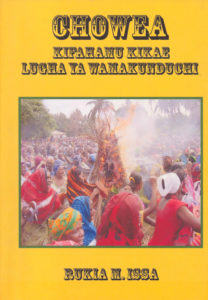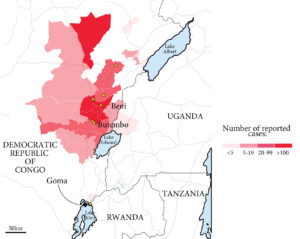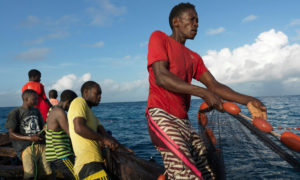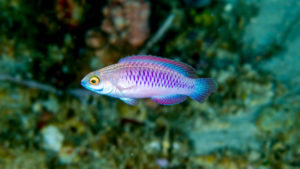by Martin Walsh
A NEW HISTORY OF TANZANIA. Isaria N. Kimambo, Gregory H. Maddox, Salvatory S. Nyanto. Mkuki na Nyota, Dar es Salaam, 2017. xviii + 224 pp. (paperback). ISBN. £22.00.
A History of Tanzania, the forerunner of the book under review here, appeared in 1969. Edited by Isaria Kimambo and Arnold Temu, it was emblematic of a rich vein of historical scholarship emerging from University College, Dar es Salaam, during the country’s first decade of independence. The editors argued that their book met a long-standing demand for a history of Tanzania, since “most of the fragmentary material in print has either ignored or distorted the history of the Africans themselves.” The so-called ‘Dar es Salaam School’ emphasised the responsibility for Africa’s historians to provide a ‘usable past’, as Terence Ranger later put it, for liberated peoples in an era of post-colonial nation-building. Introducing their book, Kimambo and Temu sounded a cautionary note. “As research continues and more information is unearthed”, they conceded, “it will be necessary to reinterpret, improve, and expand the views presented in this volume”.
Five decades on, A New History of Tanzania offers a timely update to the original volume, which is now out of print. The late Isaria Kimambo, who passed away last year, is here joined by Gregory Maddox, a professor at Texas Southern University in Houston, and Salvatory Nyanto, a lecturer at the University of Dar es Salaam and doctoral student at the University of Iowa. They aim to provide an introduction to the history of Tanzania, in the space of a little more than two hundred pages – no easy task.
The book is divided into some twenty chapters, split into five sections. The first two deal with the development of societies in Tanzania to circa 1800, smashing old yet persistent myths by demonstrating the dynamism of migration and state formation in precolonial East Africa. The third section positions the nineteenth century as a period of transformation, as the region become more deeply connected with global processes of trade. Section four explores the German and then British occupations, African resistance to colonialism, and the rise of nationalism. The final part addresses the rise and fall of socialism in independent Tanzania, bringing the narrative to a close with the economic and political liberalisations of the 1980s and 1990s. The volume closes with reflections from Nyanto on the evolving historiography of Tanzania, and the sources and methods that have underpinned it. Throughout the authors remain attentive to the regional and global dimensions to these processes of change: as Nyanto puts it, “Tanzania’s history has not occurred in splendid isolation” (p. 197). In writing this book, the authors have confronted several significant challenges. How to compress centuries of history of a vast area, populated by heterogeneous peoples, into a single, concise volume? Which developments to foreground as the motors of historical change and which, though the subjects of whole monographs themselves, must be covered in a single paragraph or handful of sentences? Inevitably, this leads to difficult choices and some unevenness. It might be asked, though, as to whether the Maji Maji rebellion against German colonial rule might merit more than a single page, as it does here. There is also little said about Tanzania’s cultural history. Another challenge confronting the authors is the problem of synthesising into a single book the corpus of historiography on Tanzania, which has evolved and expanded in a range of directions since the publication of Kimambo and Temu’s original edited volume. Each chapter is helpfully accompanied by a short bibliography, offering guidance for further reading. Unfortunately, apart from Nyanto’s concluding essay, the selection tends towards earlier scholarship published in the 1960s and 1970s. While this attests to the longevity of some of this work – all too often overlooked by historians writing today – it does give parts of the text a somewhat dated feel, especially once the story encounters the rise of TANU and the nation-state. Finally, given the book is in part intended as a reference volume, it would have been helpful for it to have included an index. This remains, however, a useful book for newcomers to the rich past of the land that has become Tanzania.
George Roberts
George Roberts is a Junior Research Fellow at the University of Cambridge. He obtained his PhD from the University of Warwick in 2016. His interests include the contemporary history of East Africa and the global Cold War. He is presently completing a book manuscript on ‘revolutionary Dar es Salaam’ in the 1960s and 1970s, while also commencing postdoctoral research on decolonisation in Comoros.
THE TRAVAILS OF A TANZANIAN TEACHER. Karim F. Hirji. Daraja Press, Montreal, 2018. xvii + 227 pp. (paperback). ISBN 978-1-988832-09-8. £2.88. (Free ebook: https://tanzanianteacher.pressbooks.com/)
When the Guyanese scholar and activist Walter Rodney published an article about ‘disengagement from imperialism’ in the first edition of the University of Dar es Salaam student periodical MajiMaji in 1971, few suspected that this was only the prelude to something much bigger. Rodney approached one of the members of the editorial board, a hitherto obscure Maths lecturer called Karim Hirji, and asked him to review the early chapters of his draft book. How Europe Underdeveloped Africa was published to great acclaim the following year.
In addition to reviewing Rodney’s work, Hirji also contributed to MajiMaji himself. His ‘School education and underdevelopment in Tanzania’ (1973) was a powerful empirical paper that chimed with Rodney’s idealism. The manifestations of underdevelopment were a recurring theme in the writing of both men.
Four and a half decades after the first publication of Rodney’s magnum opus, Hirji reaffirmed his adherence to his idol’s revolutionary trajectory by publishing The Enduring Relevance of Walter Rodney’s How Europe Underdeveloped Africa (2017). The young Rodney and Hirji were together at the University of Dar es Salaam between 1966 to 1973 and shaped the radical milieu that academicians-cum-liberators such as John Garang and Yoweri Museveni were schooled in, along with other ardent members of the University Students’ Revolutionary Front (USARF) on The Hill in the early 1970s.
The retired Professor Hirji has recently released The Travails of a Tanzanian Teacher. In this new work, as well as of exalting his former colleague, Hirji reminds us not bury the revolutionary socialist cause that he espoused. He has crammed this book full of facts and reminiscences, eleven chapters with numerous black and white photos of colleagues and students from the period 1969 to 1982, together newspaper headlines and excerpts, and a diary (timeline) of July 1972’s student upheavals at the University of Dar es Salaam.
Using first person narration and less of the jargon that he has employed elsewhere, this is an invigorating memoir of Hirji’s early life and teaching dedicated to his students and their causes at the various institutions he taught at in the socialist Tanzania of the 1970s. In the process, he demonstrates his utter discontent with the pedagogical underdevelopment of Tanzania since those times and the heyday of Rodney, and delivers a sharp critique of the disconnected form of the current knowledge and skill delivery system in the country.
Hirji utterly abhors the contemporary spoon-feeding methodology that he sees as negating the critical nurturing of minds that his own teaching has always aimed at. Furthermore, his negative impressions of a visit to Zanzibar in 1971 are a stern reminder that it is too early to turn from the spirit of Rodney’s idealism and his will to build a just society disentangled from the roots of imperialism and racism that have been imposed on it.
Hirji unapologetically skewers unpatriotic attitudes in his provocative yet immensely engaging prose. Like Rodney’s How Europe Underdeveloped Africa (1972), The Travails of a Tanzanian Teacher is a book deserving our attention.
Ahmad Kipacha
Ahmad Kipacha graduated from the University of Dar es Salaam in 1994 with a Masters in Applied Linguistics, and received his PhD from the School of Oriental and African Studies (SOAS) in the University of London in 2005. He is currently Senior Lecturer at the School of Business Studies and Humanities of the Nelson Mandela African Institution of Science and Technology in Arusha (2012-), teaching courses in the humanities, research communication, leadership, ethics and governance. He has researched, published and taught on African culture and languages, religion and development, social entrepreneurship and innovation leadership.
CHOWEA: KIFAHAMU KIKAE LUGHA YA WAMAKUNDUCHI. Rukia
M. Issa. Intercolor Printers Zanzibar, Zanzibar, 2018. iii + 168 pp. (paperback). ISBN 978-9976-5241-0-9. (No price given.)

CHOWEA
As many of the readers of this bulletin will know, there’s more than one variety of Swahili. They include a string of old dialects, some of them barely clinging to life in scattered locations on the Indian Ocean coast and islands, from Somalia in the north to Mozambique in the south. Some of these, especially those spoken at the extremes of this distribution, are so different that they warrant classification as separate languages. Others, like the village-based vernaculars of rural Unguja (Zanzibar) island, shade imperceptibly into one another. The differences between all them, meanwhile, are being eroded by the spread of Standard Swahili and speech habits that were originally based on the parlance of Zanzibar town.
The good news is that after a long period of postcolonial fallow, research and writing on the Swahili dialects has been picking up, especially in Tanzania. One of the beneficiaries of this has been Kikae, “the old language” of Makunduchi, the village in south-east Unguja which is best known for its gloriously photogenic, much-visited and now over-politicised Mwaka Kogwa or New Year festival. Although Kikae is already the subject of a full-length linguistic description (by Odile Racine-Issa) and two printed vocabularies (by Haji Chum and the scholars at the Baraza la Kiswahili la Zanzibar, BAKIZA), I was very pleased to find a copy of this new locally-published book by Rukia Issa in the Masomo Bookshop in Zanzibar.
As its title implies, Chowea: Kifahamu Kikae Lugha ya Wamakunduchi (‘Speak! Understand Kikae, the Language of the Makunduchi People’), is a primer of the local dialect, a kind of Teach-Yourself Kikae. This is a fascinating addition to the literature, its most endearing feature being the focus of each chapter on a particular aspect of village life and the vocabulary associated with it. Beginning with greetings, it includes chapters on cooking and food, clothing and hairstyles, relationships and marriage, sickness and death, and much more besides. I especially like the sections on cultural themes that don’t often find their way into linguistic studies: insults, traditional medicine, and the vocabulary of the Mwaka Kogwa festival itself, to cite just a few.
I’ve written elsewhere about one of my favourites from the chapter on traditional medicine. This is the phrase “Jumba la ndege Mnana”, “The weaver bird’s nest” (literally “large house”), which is glossed “Likichomwa hufanywa mafusho na kufukizwa mgonjwa mwenye maradhi hasa yanayo ambatana na shetani”, “When burnt it produces healing vapours used to fumigate a sick person, especially someone with an illness associated with a possessory spirit” (p. 91). A subsequent example corrects and expands the phrase and illustrates its use: “Jumba lya ndege ya mnana kavu hutendwa mafuso ya wana. Jumba la ndege aina ya mnana lililo kavu hufanyiwa mafusho ya watoto” (p. 96). In other words, “The dry weaver bird’s nest produces medicinal fumes for treating children”.
Mnana is the name of the African or Eastern Golden Weaver, Ploceus subaureus. The subspecies aureoflavus is a highly gregarious and common bird on the island that typically builds a tightly-woven oval or spherical nest with grass or reed strips. Breeding can occur at any time of the year, and disused dry nests are presumably readily available. I’m unaware of any other record of their use for fumigation, or indeed similar practices being reported elsewhere, but stand to be corrected. This is just one example of a phrase in the book that has intrigued and left me wanting to know more.
I confess that I haven’t tried to use Chowea to learn Kikae, not yet anyway. But I’m certainly hooked on its lexical delights. It’s wonderful to see this kind of work being published locally. The only downside is that books like this are difficult to obtain outside of Tanzania, and in this case, Zanzibar. It is, however, worth making the effort, not least because publishers in the country are struggling to stay afloat in the face of recent regulatory impositions. Along with enterprising authors and self-publishers like Rukia Issa, they need as much help and encouragement as they can get.
Martin Walsh
Martin Walsh is the Book Reviews Editor of Tanzanian Affairs and has drawn part of this review from his East African Notes and Records blog.
Also noticed in Zanzibar:
THE WORLD OF KISWAHILI LANGUAGE: ULIMWENGU WA LUGHA YA KISWAHILI. Amir Ali Mohammed. Medu Press, Zanzibar, 2019. ii + 57 pp. (paperback). (No ISBN number or price given.)
This is the latest booklet from a prolific local author whose Zanzibar Ghost Stories (first published 2000; 2nd edition 2006) is perhaps his best-known work. It’s a short introduction to Swahili, written partly in the form of a phrase book for tourists, but also including an entertaining section of Swahili proverbs and their rather free English translations. I found this on sale in Gizenga Street where the genial Amir Mohammed can usually be found sitting in the same spot in the late afternoons.
JOZANI NATURAL FOREST: ZANZIBAR TREASURES IN WILD.
Yusuf H. Kombo. Zanzibar, 2017 (revised edition). vii + 28 pp. (paperback).
ISBN 978-9976-89-827-9. (No price given.)
KUNGA ZA MANYAKANGA. Yusuf H. Kombo. Zanzibar, 2018. vii + 28 pp.
(paperback). ISBN 978-9976-89-827-9. (No price given.)
Yusuf Kombo, a Bangor-trained forester and Zanzibari herbalist, is another prolific author and publisher of his own booklets. I found both of these on sale at the reception desk of Jozani-Chwaka Bay National Park. The first, which was originally published in 2014, describes 46 plant species and their local medicinal uses, some of which come with warnings to the effect that they must only be prescribed by experienced practitioners. The second booklet is a novel about traditional girls’ initiation, the “teaching of the instructors” referred to in its title. More information about these and other publications by Yusuf Kombo can be found on the many blog sites that he has begun.
Martin Walsh




